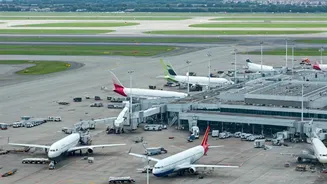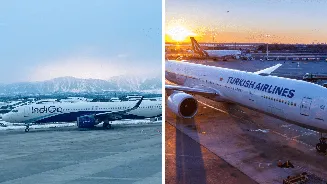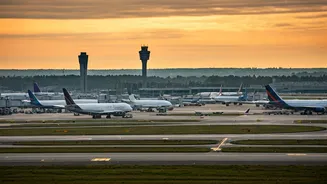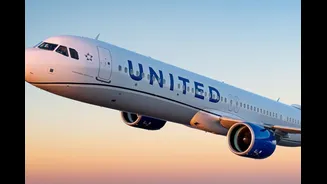Initial Disruptions Unfold
The repercussions of the shutdown were immediately felt across the US aviation network. Numerous flights were either canceled or delayed, causing widespread
inconvenience for travelers. Reports indicated that a substantial number of passengers were stranded, facing uncertain travel plans. The cascading effect rippled through the system, leaving both passengers and airline staff grappling with operational challenges. These operational difficulties were further compounded by the reduced availability of personnel, and the intricate logistical demands of managing passenger flow. Airlines scrambled to provide support and information while trying to minimize the impact. The effects soon became visible as major airports reported congestion and backups, indicating a broader strain on the aviation infrastructure. The disruption highlighted the crucial role that government operations play within the seamless functioning of this crucial sector.
Impact on Key Airports
The shutdown's impact was concentrated across forty major US airports, causing immense congestion and delays. High-traffic hubs bore the brunt of these disruptions as they struggled to maintain their routine. These airports, vital to the nation's air transportation network, faced immense pressure as passenger volumes were unusually high. Operational capacity within the airports was decreased due to the shutdown. This led to slower processing times, increased waiting periods, and heightened tension among travelers. The knock-on effects included missed connections, delayed baggage handling, and the need for airlines to manage unexpected logistical hurdles. The efficiency of airport operations was substantially diminished, and the entire system experienced significant stress, leading to a noticeable degradation of service quality. The situation underscored the interdependence of various elements within the aviation infrastructure, highlighting the importance of the government's role in facilitating a smooth, efficient travel experience.
Passenger Experiences Reviewed
Thousands of passengers faced major disruptions due to canceled or delayed flights. Many found themselves stranded at airports for extended periods with little information. Travel plans were abruptly altered as passengers navigated the challenges of rescheduling, rebooking, and re-routing. The resulting frustration was evident among travelers as they grappled with uncertainty. Communication from airlines was often inconsistent, worsening passenger anxiety and dissatisfaction. Assistance services were overwhelmed. Passengers experienced major problems like long queues for customer support. The closure affected individuals with important time-sensitive commitments. For passengers, the entire experience served as a sharp reminder of the vulnerability of air travel to external circumstances. The chaos underscored the critical need for robust contingency plans, clear communication, and efficient support systems.
Operational Challenges Analyzed
Airlines had to overcome major operational issues to deal with the shutdowns. The absence of crucial government staff amplified these operational challenges. Navigating the shutdown required airlines to adjust their flight schedules, manage staff availability, and address the resulting logistical challenges. Reduced staffing levels at security checkpoints and air traffic control further strained the operational capacity, and this caused increased delays and affected efficiency. Baggage handling and ground services were disrupted, contributing to an overall sense of disorder. The situation emphasized the interdependencies among different elements in the aviation ecosystem. The airlines were forced to make adjustments to their operations. They used their resources to manage the fallout and support affected passengers. The disruptions highlighted the importance of robust contingency plans, and the need for seamless coordination among different stakeholders within the industry.
Industry-Wide Repercussions
The shutdown triggered industry-wide repercussions throughout the aviation sector. Airline stocks fluctuated as investors assessed the financial implications of the disruption. The loss in revenue and the increased operational costs weighed heavily on airline finances. The incident put pressure on the overall industry's reputation, potentially affecting future travel plans. Confidence in the reliability of air travel decreased due to these events. The event also prompted discussions about government's critical role in ensuring the stable functioning of the air travel infrastructure. Airlines looked for ways to prevent disruptions in future, seeking improvements in efficiency, preparedness, and communication protocols. The industry sought to manage the fallout. Airlines looked for ways to get the public's confidence again. The entire sector reevaluated its approach to ensure resilience and adaptability in the face of similar incidents in the future.


















